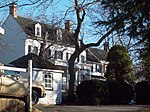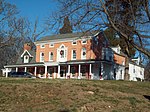William P. Didusch Center for Urologic History
Linthicum, MarylandMedical museums in MarylandMuseums in Anne Arundel County, MarylandUrology organizations
The William P. Didusch Center for Urologic History is a museum and the headquarters of the American Urological Association in Linthicum, Maryland. It is described as encompassing "a rich and varied collection of drawings, photographs, and instruments of historical importance to urology, many displayed in the urological exhibits during the American Urological Association (AUA) conventions."
Excerpt from the Wikipedia article William P. Didusch Center for Urologic History (License: CC BY-SA 3.0, Authors).William P. Didusch Center for Urologic History
Corporate Boulevard,
Geographical coordinates (GPS) Address Nearby Places Show on map
Geographical coordinates (GPS)
| Latitude | Longitude |
|---|---|
| N 39.209583333333 ° | E -76.673333333333 ° |
Address
Corporate Boulevard 1008
21090
Maryland, United States
Open on Google Maps






